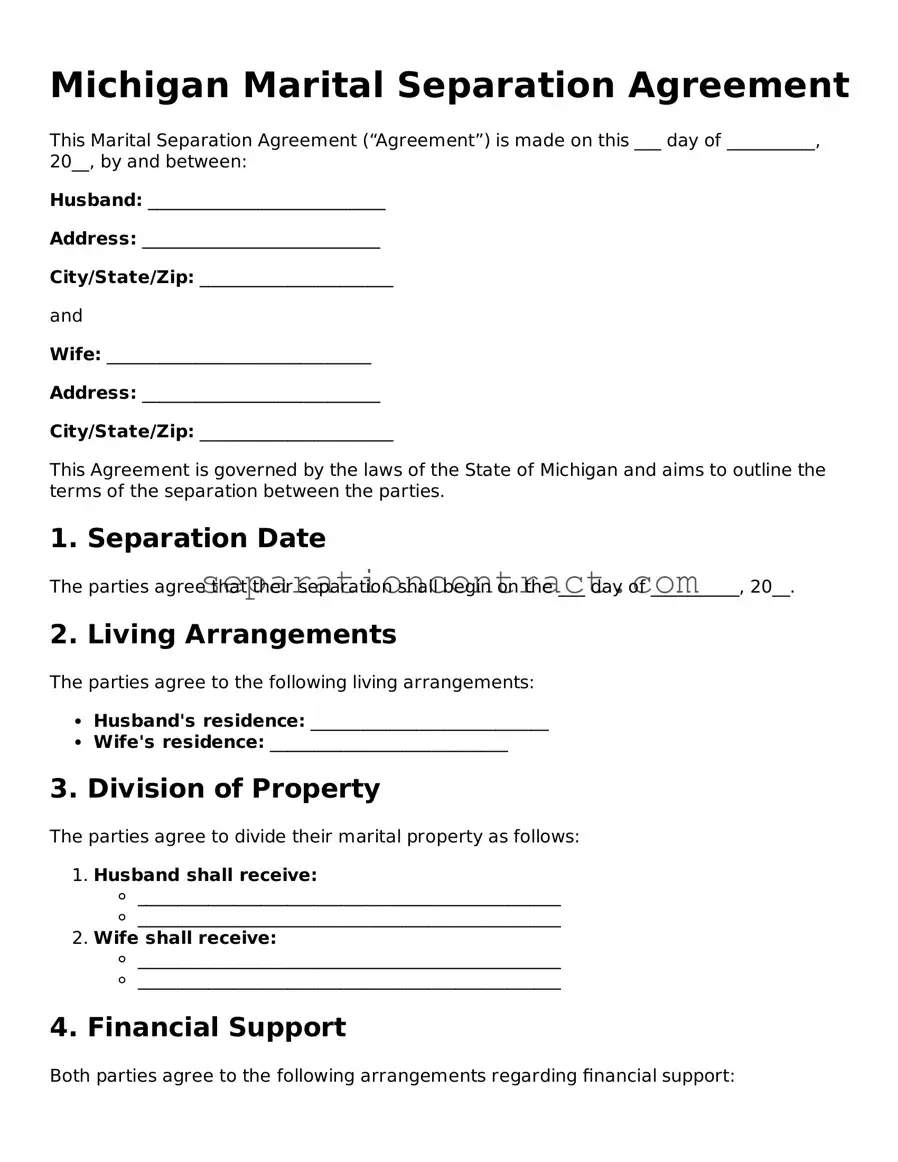Filling out the Michigan Marital Separation Agreement form can be a complex process, and many individuals make common mistakes that can lead to complications down the line. One prevalent error is failing to provide complete and accurate information. When individuals rush through the form, they might overlook essential details such as full names, addresses, or even the date of separation. Missing or incorrect information can create confusion and may delay the legal process.
Another frequent mistake involves not clearly defining the terms of the separation. It’s crucial to outline specific agreements regarding property division, child custody, and support obligations. Vague language can lead to misunderstandings and disputes later. Each party should ensure that the terms are explicit and mutually agreed upon to prevent future conflicts.
Additionally, some individuals neglect to consider the tax implications of their agreements. For instance, how property division or alimony payments are structured can significantly impact one’s tax situation. It’s wise to consult with a financial advisor to understand these implications before finalizing the agreement.
People also often forget to sign and date the form. While it may seem like a minor detail, an unsigned document is not legally binding. Both parties must provide their signatures to ensure that the agreement is valid and enforceable. This simple step can save a lot of trouble later on.
Lastly, many fail to seek legal advice before submitting the agreement. While it may seem straightforward, having a professional review the document can help identify potential issues and ensure that both parties’ rights are protected. Legal guidance can provide clarity and peace of mind, making the entire process smoother.
